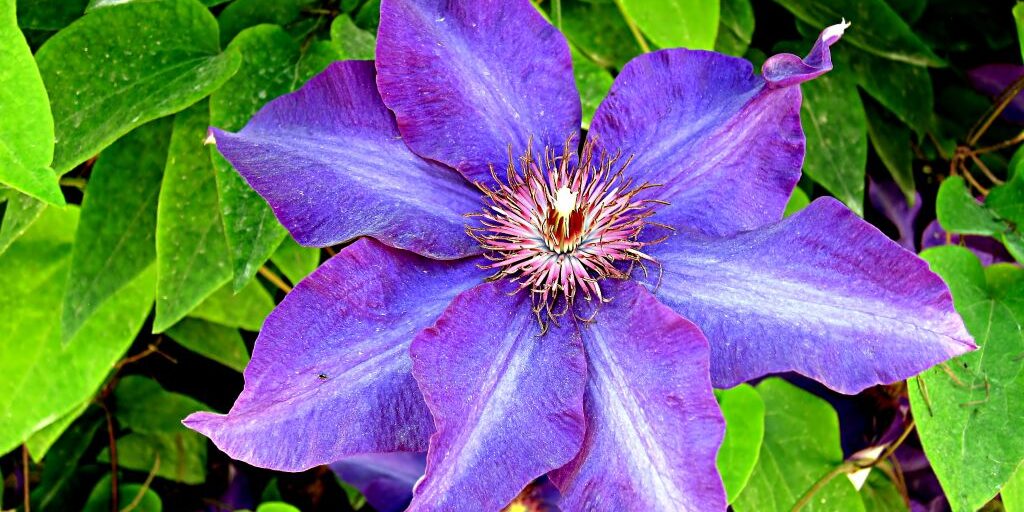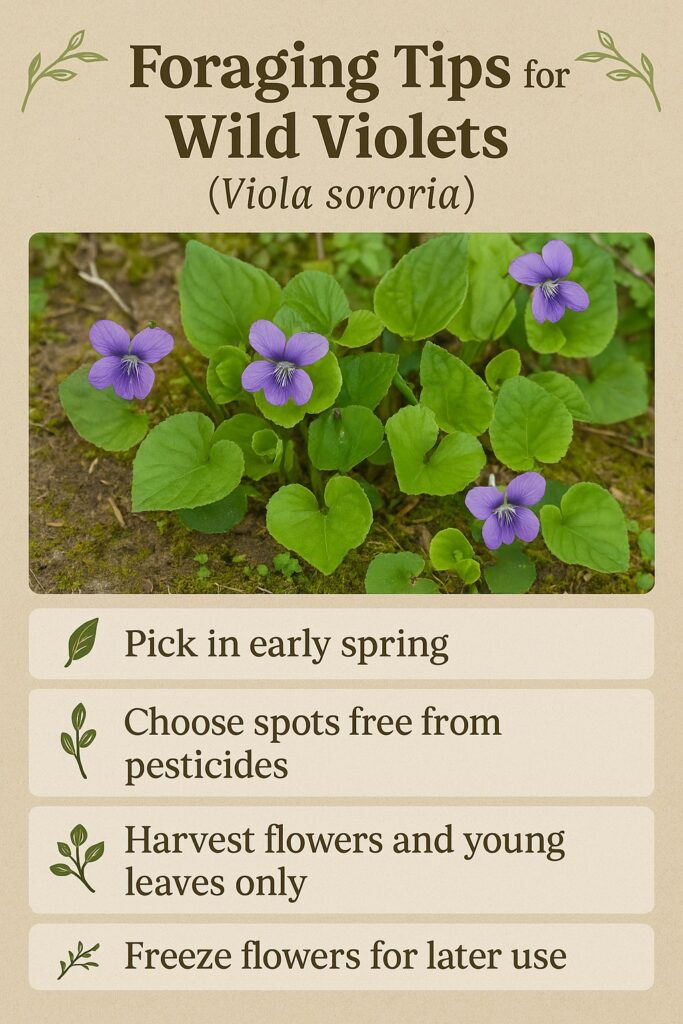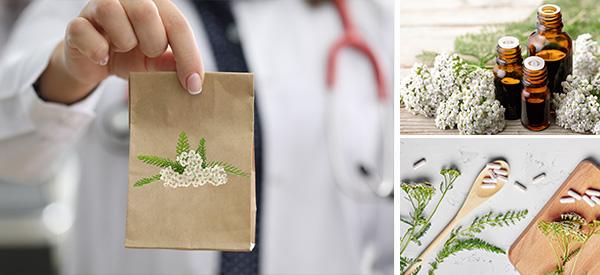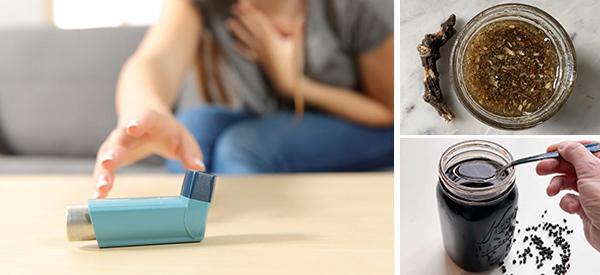
Wild Violets (Viola Sororia)
Wild Violets – The Hidden Healers of Spring
While many treat them as stubborn lawn invaders, Wild Violets (Viola sororia) are one of spring’s most beautiful and underrated treasures. These delicate, heart-shaped plants not only brighten up the forest floor but also offer an array of medicinal and edible uses that herbalists and foragers have appreciated for generations.
From soothing sore throats to topping salads with a splash of color, Wild Violets deserve a place in every naturalist’s toolkit. Let’s take a closer look at why this modest plant is one of the most beneficial herbs you might be overlooking in your own backyard.
What Are Wild Violets?
Wild Violets (Viola sororia) are perennial flowering plants native to North America. Often found carpeting meadows, shady lawns, and woodlands, they typically bloom in early spring with vibrant purple, violet, or even white flowers. Their leaves are heart-shaped and grow in a basal rosette, staying green through much of the year.
Although they’re commonly mistaken for ornamental violets, wild varieties like Viola sororia have long histories as medicinal herbs and survival foods.
How to Identify Wild Violets
You can identify Wild Violets by their:
- Flowers: Five petals, usually purple, but can range from blue to white. The bottom petal is larger and often has faint, dark lines that act as nectar guides for pollinators.
- Leaves: Heart-shaped with slightly scalloped edges, growing low to the ground.
- Growth Pattern: Found in clusters, often forming dense mats in shady or moist areas.
Unlike some lookalikes, Wild Violets have no noticeable stem. Their leaves and flowers rise directly from underground rhizomes.
Tip: Be careful not to confuse them with African violets, which are not edible.
Where to Find Wild Violets
Viola sororia thrives in temperate woodlands, open fields, shady lawns, and forest edges across the Eastern and Central U.S. You’ll typically spot them in April and May, although in cooler climates, their blooms may last into early summer.
Keep an eye out in areas where the soil is moist but well-drained. If you’re foraging, remember to avoid areas treated with herbicides or pesticides.
How to Forage Wild Violets
 Harvest Wild Violets by gently pinching off the flowers and leaves, leaving the roots undisturbed so the plant can continue to thrive. Early morning is best, just after the dew has dried.
Harvest Wild Violets by gently pinching off the flowers and leaves, leaving the roots undisturbed so the plant can continue to thrive. Early morning is best, just after the dew has dried.
- Flowers: Best used fresh for teas, syrups, or garnishes.
- Leaves: Young leaves are tender and mild – ideal for salads or infusions.
Always forage responsibly. Take only what you need, and leave plenty for pollinators and regrowth.
Health Benefits of Wild Violets
Wild Violets are more than a charming wildflower – they’re loaded with health-supporting compounds.
- Anti-inflammatory: Violet leaves contain salicylic acid, which helps reduce inflammation, similar to aspirin.
- Rich in vitamins: High in Vitamin C and A, supporting immune health and skin regeneration.
- Lymphatic support: Traditionally used to stimulate the lymphatic system and reduce congestion.
- Respiratory relief: A soothing expectorant, ideal for coughs, colds, and sore throats.
- Topical use: Can be applied as a poultice to reduce swelling, treat minor wounds, or calm skin irritations.
Traditional herbalists have long valued Wild Violet as a gentle detoxifier for spring cleansing.
How to Use Wild Violets
There are plenty of ways to use Wild Violets in the kitchen and medicine cabinet:
- Violet Tea: Steep a handful of fresh leaves and flowers in hot water for a mild, soothing tea.
- Violet Syrup: Boil the flowers in water, strain, and mix with honey or sugar. A beautiful and medicinal syrup for sore throats or baking.
- Salads: Use young leaves and blossoms as colorful additions to fresh greens.
- Poultice: Crush fresh leaves and apply to minor skin irritations or insect bites.
Drying violets can reduce their potency, so they are best used fresh whenever possible.
Can You Freeze Wild Violets?
Yes, Wild Violet flowers can be frozen for later use – especially if you want to make syrups or teas outside of the growing season. Simply spread the cleaned flowers on a baking sheet and freeze. Once solid, transfer to an airtight container and store in the freezer.
The leaves can be blanched and frozen as well, although their texture changes slightly after thawing.
Poisonous Lookalikes
Luckily, Wild Violets are relatively safe to identify, and they have few dangerous lookalikes. However, always take care to confirm identification. Avoid any plant with a milky sap, as this is not characteristic of true violets.
When in doubt, refer to a trusted plant guide or consult a knowledgeable forager.
A Final Thought: Learn to Identify Wild Food – It Might Save Your Life
Knowing how to identify wild edibles like Wild Violets isn’t just a charming hobby – it’s a real survival skill. When supply chains break or modern medicine isn’t available, nature provides. But only to those who know where and how to look.
If you’re serious about learning more plants that can keep you fed and healthy when times get tough, we highly recommend the Wilderness Survival Guide. This comprehensive book teaches you how to safely forage, identify, and use dozens of wild plants that our ancestors relied on for generations.
You can get your copy here: https://www.wilderness-survival-guide.com/book
You may also like:
 The Medicinal Benefits of Your State Flower
The Medicinal Benefits of Your State Flower
The Plant Our Forefathers Used When They Had Fever (Video)









The description says wild violets have 5 leaves, but the main photo shows 7. I find this misleading. I hope the book I just ordered is more accurate in photos. (Yes I do see the other photo of plants with 5 leaves as well.)